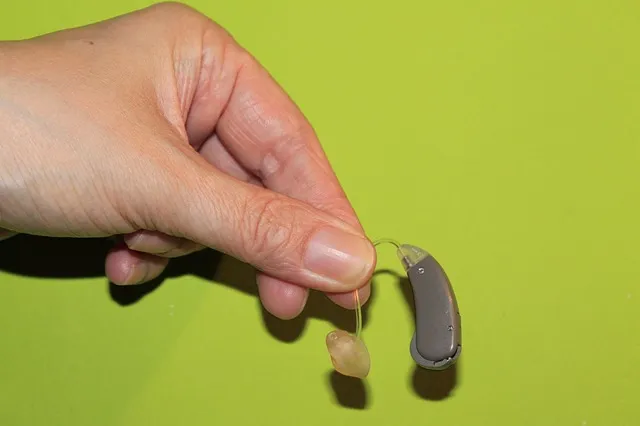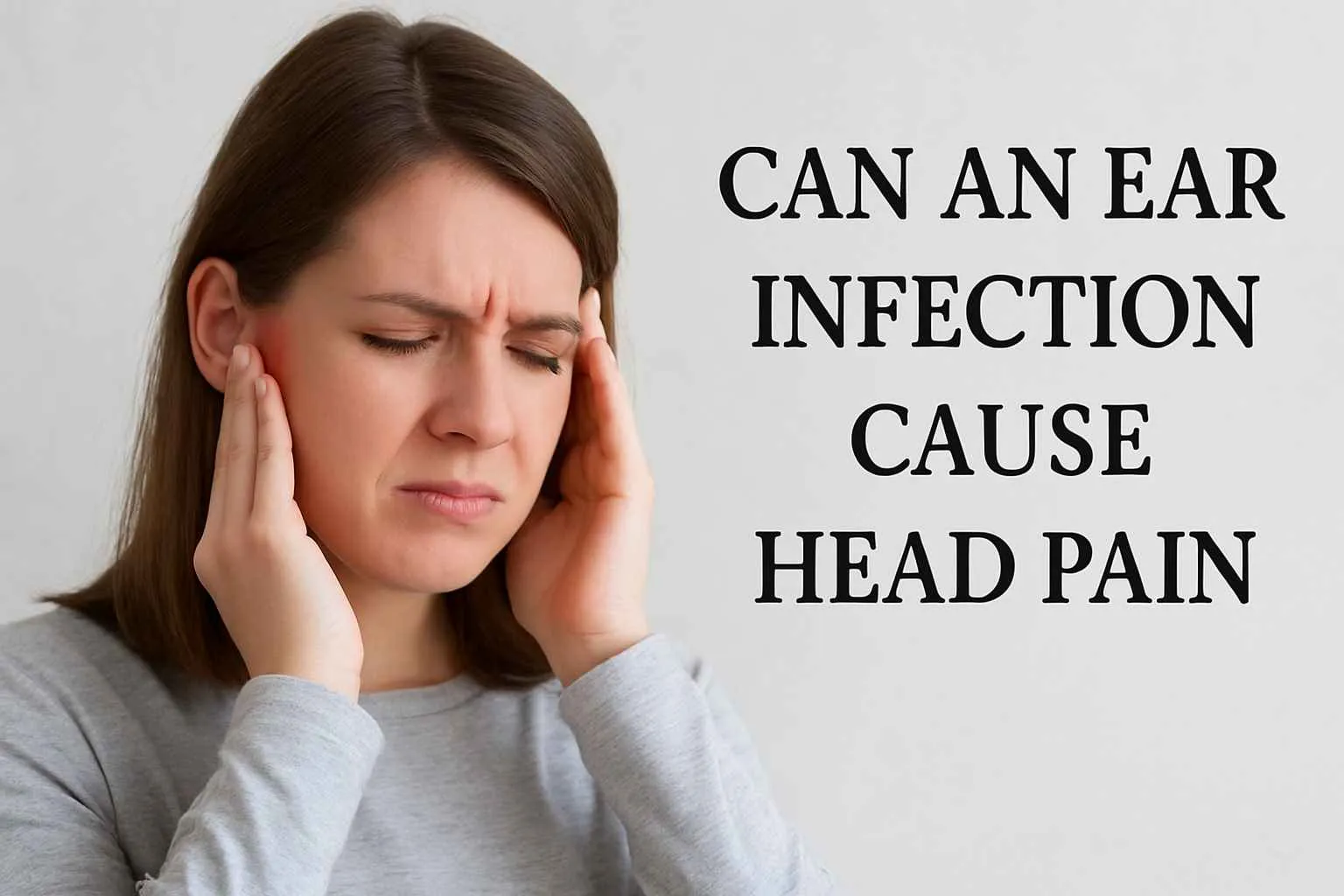|
Dairy, fried foods, processed meats, sugary snacks, refined carbs, gluten, salty chips, spicy meals, and junk food are common foods that cause earwax, often leading to stubborn buildup. |
You wake up, rub your ear, and it feels blocked. Not painful, just dull. The TV sounds faint, and tugging at your earlobe doesn’t help. What many people don’t realize is that their diet could be a hidden reason behind this simple annoyance.
Certain foods that cause earwax (cerumen) buildup can trigger excess mucus production, dehydration, or inflammation, making your ears feel clogged more often. While earwax is important for protecting your ears, too much of it can be uncomfortable. In this blog, we’ll explore the common foods causing earwax buildup and practical tips to keep your ear health in balance.
9 Foods That Cause Earwax Buildup (Doctors Warn Against These)
Earwax, or cerumen, protects your ears. It catches dust, coats the canal, and keeps infection away. But too much becomes a problem. In the U.S., cerumen impaction affects about 6% of the general population, 10% of children, and more than 30% of older adults. That adds up to roughly 12 million visits to clinics and 8 million removal procedures each year.
While genetics and habits matter, foods that cause earwax buildup can tip the balance.
1. Dairy Products (Milk, Cheese, Yogurt)
Think about pizza night or a large ice cream sundae. For many, dairy means comfort. For some, it means clogged ears the next morning. The link comes from dairy thickening mucus. In people with sensitivities, it also stirs inflammation. The result is heavier, stickier wax.
Examples:
-
Milk
-
Cheese
-
Butter
-
Yogurt
-
Ice cream
Better option: Try almond milk in cereal, soy yogurt with fruit, or vegan cheese on toast. These swaps cut down on the “does dairy cause earwax” question people keep asking.
2. Fried and Greasy Foods
The sizzle of fries in oil, the crunch of fried chicken skin. Tempting, sure. But greasy foods encourage oil production all over the body, including the glands that make earwax. More oil equals wax that doesn’t drain smoothly.
Examples:
-
Fries
-
Fried chicken
-
Onion rings
-
Doughnuts
-
Potato chips
Better option: Go for baked potatoes, grilled meats, or air-fried snacks. A little olive oil drizzle satisfies without becoming part of the oily foods earwax cycle.
3. Processed Meats (Bacon, Sausages, Deli Meats)
Breakfast bacon, weekend hot dogs, or that sub stacked with deli slices. The preservatives and heavy salt in these meats strain the body and can show up as excess wax. It’s one of the less obvious common foods that cause earwax, but it's still worth attention.
Examples:
-
Bacon
-
Sausages
-
Hot dogs
-
Ham
-
Salami
Better option: Lean turkey or fresh chicken prepared at home. Same protein, less irritation.
4. Sugary Foods and Sweets
The sugar and earwax connection is simple: sugar inflames. High sugar spikes disrupt the gut, and that stress trickles out into glands across the body. Wax included. People often notice more blockages after a holiday sugar binge.
Examples:
-
Candy
-
Soda
-
Cakes
-
Pastries
-
Sugary cereals
Better option: Fresh fruit. Apples, berries, and oranges give sweetness without the crash. Honey or stevia works if you need a light touch for drinks.
5. Refined Carbohydrates (White Bread, Pasta, Pastries)
White bread toasts golden, croissants flake beautifully, but refined carbs hit the body like sugar. They break down fast, feeding inflammation and slowing natural processes, including wax flow.
Examples:
-
White bread
-
Pasta
-
Crackers
-
Croissants
-
Bagels
Better option: Whole grains. Quinoa, oats, or brown rice leave energy steady and keep the diet and earwax production cycle calmer.
6. Gluten and Wheat Products
For some, gluten brings bloating, fatigue, and even skin irritation. And yes, it can reach the ears. The gluten and earwax buildup link shows up in those sensitive to wheat. Their immune system reacts, glands overproduce, and wax thickens.
Examples:
-
Wheat bread
-
Pizza crust
-
Pasta
-
Wheat cereals
Better option: Gluten-free grains. Rice, buckwheat, or millet satisfies without triggering the same reaction.
7. Salty & Sodium-Heavy Snacks (Chips, Fast Food)
That salty crunch can be addictive. But sodium pulls water out of tissues. Less hydration equals drier wax. Dry wax packs tightly, making ears feel plugged. This is the salty foods earwax pattern that many don’t connect until it’s pointed out.
Examples:
-
Chips
-
Pretzels
-
Ramen packs
-
Fast food fries
Better option: Fresh vegetables with hummus. Lightly salted popcorn also scratches the craving without draining the body.
8. Spicy Foods
Some can handle hot sauce daily. Others sweat after one bite. For sensitive people, heat means swelling in glands, including those producing wax. More stimulation, more production.
Examples:
-
Curries
-
Jalapeño dishes
-
Hot wings
-
Extra-hot sauces
Better option: Cook with herbs. Basil, rosemary, or parsley give aroma and depth without sparking wax overdrive.
9. Junk Food & Processed Snacks
Convenient, cheap, and found everywhere. But junk food layers salt, sugar, and fat together. That cocktail leaves wax stickier and harder to clear. Among the foods that cause earwax, this group deserves the spotlight.
Examples:
-
Candy bars
-
Pizza rolls
-
Snack cakes
-
Nacho chips
Better option: Nuts, fruit slices, or energy balls made with oats and dates. Quick, filling, better for the ears.
How Diet Influences Wax Buildup
Food does not directly create wax, yet certain items make the glands behave differently. Wax glands sit inside the ear canal. They work like sweat glands. When inflammation rises, these glands react faster. When the body becomes dry, wax becomes hard. If oil levels rise, wax becomes sticky. Many people also notice sudden wax after festivals, late-night meals, or heavy snacks. This is because the diet that causes earwax usually pushes three internal responses:
1. More mucus
Dairy, sugar, gluten, and oily foods can increase mucus in sensitive people. Mucus moves through the sinuses. When it becomes heavy, airflow changes, and the ear canal feels blocked.
2. More inflammation
Sugar, refined carbs, and processed meats increase inflammation. When inflammation rises, glands overproduce. This leads to excess earwax.
3. More oil production
Fried foods and greasy items increase body oil levels. Ear glands also respond. This creates sticky wax that does not come out easily.
4. More dehydration:
Salt-heavy foods dry the body. Dry wax sticks inside the canal.
This connection between diet and earwax buildup is simple but powerful. Now, let us go deeper into the foods that worsen earwax buildup and healthy swaps that reduce the problem.
According to a US national study, 18.6% of people aged 12 and above have some level of cerumen impaction. The rate goes even higher in older adults. In people aged 70 and above, cerumen impaction affects 32.4%.
Another part of the same dataset shows that 6.3% have bilateral partial+complete impaction, while 1.2% have bilateral complete blockage. Risk factors include male sex (OR 1.77), Black race vs Caucasian (OR 1.78), lower education (OR 0.84,) and older age (OR 1.02 per year). These numbers show how common wax issues are.
Foods That Push Wax vs. Foods That Ease It
Looking at meals side by side makes choices clearer. Below, compare common foods that cause earwax with healthier swaps that keep ears comfortable and wax manageable.
|
Foods That Cause Earwax |
Healthier Picks |
|
Milk, cheese, yogurt |
Almond milk, soy yogurt |
|
Fries, fried chicken |
Baked potatoes, grilled chicken |
|
Bacon, ham, salami |
Fresh turkey, chicken |
|
Soda, candy |
Fresh fruit, honey |
|
White bread, croissants |
Whole grains, oats |
|
Wheat pasta, cereals |
Gluten-free grains |
|
Chips, ramen |
Vegetables, popcorn |
|
Spicy curries |
Fresh herbs |
|
Junk snacks |
Nuts, seeds, fruit |
Simple swaps add up quickly. Choosing these alternatives not only supports ear health but also helps reduce foods that cause earwax buildup, keeping daily life more comfortable.
Other Lifestyle and Diet Factors That Affect Earwax
Food matters, but it’s not the only thing. Dehydration hardens wax. Poor sleep raises stress hormones, which can increase oil production. Skipping vitamins lowers immune defense. Even spending time in loud spaces, construction zones, and concerts can push glands to produce more.
Other triggers include:
-
Chronic stress
-
Lack of zinc, vitamin A, and vitamin C
-
Low water intake
-
Limited physical activity
Paying attention to these pieces alongside diet keeps the earwax and diet link balanced.
What Foods Prevent Earwax Buildup Naturally
Not every bite works against you. Some meals actively support ear health. Anti-inflammatory foods calm the glands. Hydrating choices keep wax soft. Nutrient-dense items strengthen immunity, lowering the chances of infection that complicates wax buildup.
-
Omega-3 Foods: Salmon, walnuts, flaxseeds
-
Vitamin C Sources: Kiwi, oranges, bell peppers
-
Hydrating Foods: Cucumbers, watermelon, celery
-
Zinc Foods: Pumpkin seeds, chickpeas, beef
-
Antioxidants: Blueberries, spinach, green tea
Over time, these help maintain balance in the body and ears alike.
Doctor-Recommended Tips for Managing Earwax
Doctors see the same mistakes again and again. Cotton swabs pushed too deeply. Ignoring hydration. Scraping at the ears until the skin is raw. The smarter path is simpler.
Tips:
-
Wipe only the outer ear with a damp cloth
-
Skip cotton swabs inside the canal
-
Use approved ear drops if the wax feels too dry
-
Drink enough water every day
-
See an ENT if hearing stays muffled
These routines matter as much as avoiding common foods that cause earwax.
Final Thoughts
While diet isn’t scientifically proven to directly cause earwax, certain foods may contribute indirectly. Foods such as gluten, dairy, sugary treats, caffeinated drinks, and processed items can increase mucus production and inflammation, potentially leading to more earwax buildup. If you notice excessive earwax or experience discomfort, it’s best to consult an ENT specialist or audiologist, who can help identify the cause and recommend effective treatment.
Read Also Fluttering In Ear: Causes, Treatment, And Prevention
Frequently Asked Questions
Why does my earwax build up so fast?
Fast wax buildup can be attributed to genetics, age, skin type, and daily habits. Sometimes, a diet high in inflammation and oil can cause the glands to work harder. People with narrow canals or sinus issues often face repeated blockages. Changing food and lifestyle patterns may reduce this cycle.
Is earwax a sign of a poor diet?
Not always, but a poor diet often makes wax thicker.
Can drinking water help soften earwax?
Yes. Hydration keeps wax softer and easier to expel.
What vitamin deficiency causes ear wax?
Though no vitamin deficiency is directly associated with excess build-up of ear wax, lack of vitamin E can contribute to flaky, dry ear wax, causing blockages and discomfort.
Why are my ears suddenly producing a lot of wax?
The potential reasons can be an ear infection, poor ear hygiene, or hair growth inside the ear.
Can stress increase ear wax?
Yes, it can. The body produces cortisol as a response to stress that triggers glands to produce ear wax.
Can we use Q tips to get rid of ear wax?
Though Q-tips can help with gentle ear wax removal from the outer ear, using them in the inner area is not recommended as it can move the wax deeper into the ear canal.
Are there any natural remedies for ear wax build-up?
Warm water and saline solution can help flush ears and OTC ear drops can soften the wax.
Reviewed by







